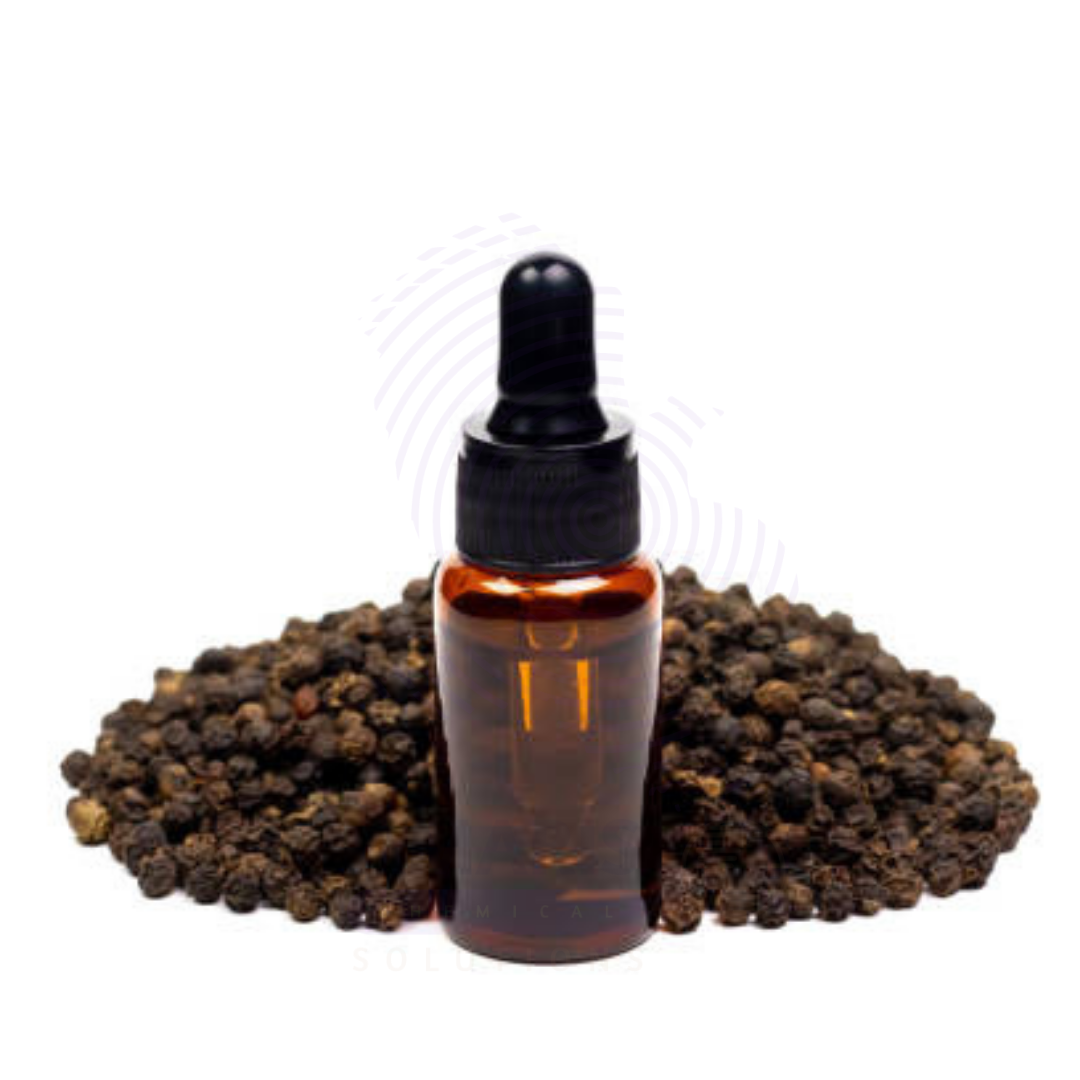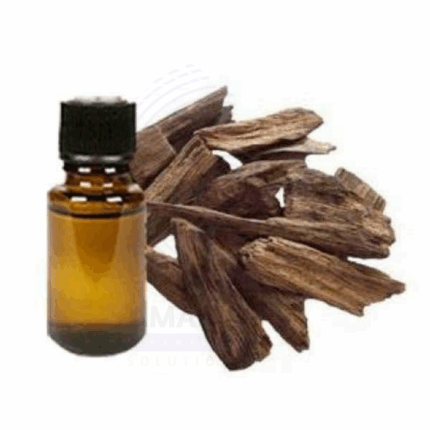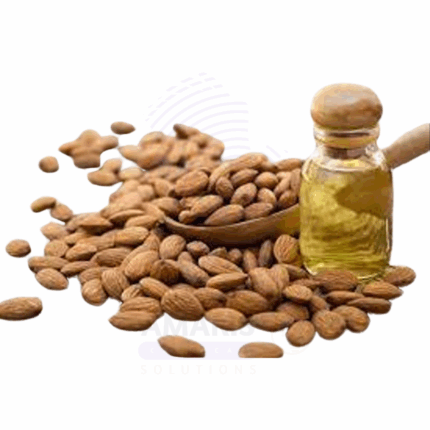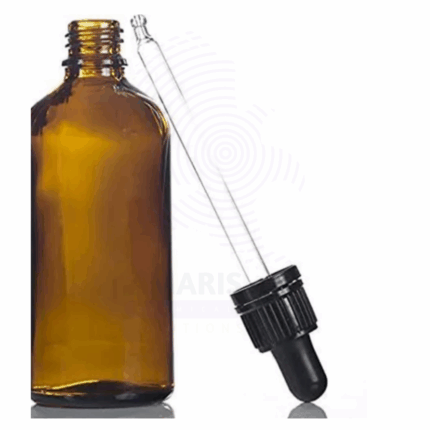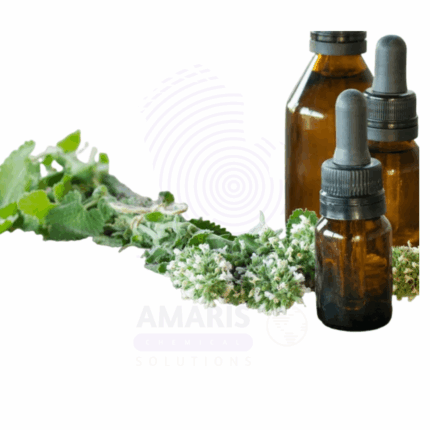Spikenard Oil
Whatsapp Order
Spikenard Oil is a precious essential oil steam-distilled from the rhizomes and roots of Nardostachys jatamansi, a flowering plant native to the Himalayan regions of Nepal and India. With a rich, warm, earthy, and slightly sweet aroma, this oil is characterized by complex notes of wood, musk, and spice. Its main constituents—nardol, jatamansone, and valeranone—offer well-known anti-inflammatory, calming, and neuroprotective properties. Historically revered in Ayurvedic and spiritual traditions, Spikenard Oil is used in aromatherapy for relaxation, meditation, and emotional well-being, as well as in high-end perfumery, skincare, and therapeutic formulations.
Category: Fragrances and Essential Oils
Tags: Anti-inflammatory Essential Oil, Grounding Aroma Oil, Herbal Woody Essential Oil, Meditation Oil, Nardostachys Jatamansi Oil, Nardostachys Jatamansi Oil Herbal Woody Essential Oil, Natural Fragrance Ingredient, Skin Soothing Oil, Spikenard Oil, Therapeutic Relaxation Oil
Description
Table of Contents
Toggle
Spikenard Oil
Primary Uses
- Aromatherapy & Wellness
- Diffused to promote deep relaxation, reduce anxiety, and support restful sleep.
- Used in meditation blends to enhance grounding, spiritual clarity, and presence.
- Incorporated in stress-relief oil rollers and inhalers for calming the nervous system.
- Added to massage oils for soothing muscle tension and easing mental fatigue.
- Included in respiratory-support blends to gently relieve congestion and promote calm.
- Cosmetics and Personal Care
- Added to facial serums, creams, and oils for anti-aging, skin-calming, and soothing benefits.
- Used in natural deodorants and personal fragrance blends for its distinctive herbal-woody aroma.
- Incorporated in body balms, lotions, and bath oils for relaxation and skin nourishment.
- Applied in scalp treatments and hair oils to soothe irritation and strengthen follicles.
- Topical Applications
- Diluted and applied to minor wounds, burns, or irritation as a calming topical agent.
- Used in compresses or salves to reduce inflammatory discomfort and support skin healing.
- Included in blends for joint and muscle relief due to anti-inflammatory effect.
- Applied in calming sprays for skin sensitization or redness after exposure or irritation.
Secondary Uses
- Cleaning and Detergent Products
- Added to high-end natural cleaners and sanitizers for aroma and mild antimicrobial function.
- Used in home fragrance products such as room sprays and linen mists for an herbal, grounding scent.
- Spa and Therapeutic Products
- Used in aromatherapy massage blends in spa settings for relaxation and stress relief.
- Incorporated in bath soaks, facial steam blends, and wellness balms for body and mind rejuvenation.
- Fragrance and Ambient Scenting
- Used as a base or middle note in niche perfumes, natural colognes, and ambient scent systems with herbal, woody, or oriental profiles.
- Blended into luxury candles, reed diffusers, and oil burners to evoke meditative and serene atmospheres.
- Pet and Animal Care
- Used in pet-safe room mists or calming sprays (very low concentration and with expert guidance).
- Industrial and Specialty Applications
- Employed in specialty fragrance lines for spa, wellness, and boutique product ranges where a distinctive earthy-woody note is desired.
KEY PRODUCT FEATURES
1. Basic Identification Attributes
- Botanical Name: Nardostachys jatamansi
- Common/Trade Name: Spikenard Oil
- INCI Name: Nardostachys Jatamansi Root Oil
- CAS Number: 224-219-5
- HS Code: 3301.29
- Synonyms: Nard Oil, Jatamansi Oil, Spikenard Essential Oil
2. Physical & Chemical Properties
- Physical State: Liquid essential oil
- Color & Odor: Dark amber to yellow-brown; deep, warm, woody, earthy aroma
- Solubility: Insoluble in water; soluble in alcohol and fixed oils
- Refractive Index: 1.490 – 1.510
- Specific Gravity: 0.950 – 0.980
- Main Components: Nardol, jatamansone, valeranone, elemol
3. Safety & Hazard Attributes
- GHS Classification: May cause skin sensitization or irritation if undiluted
- Toxicity: Low toxicity when properly diluted; for external use only
- Exposure Limits: Refer to Safety Data Sheet (SDS)
- Allergen Information: Contains natural allergens; patch testing recommended
4. Storage & Handling Attributes
- Storage Conditions: Store in a cool, dry, well-ventilated environment, protected from light
- Container Type: Amber glass or aluminum bottles with airtight closures
- Shelf Life: 24 to 36 months if stored under optimal conditions
- Handling Precautions: Use gloves and limit direct skin contact with undiluted oil
5. Regulatory & Compliance Attributes
- Compliant with IFRA standards for fragrance use
- Produced in GMP-compliant and quality-controlled manufacturing facilities
- Not classified as hazardous for transport under normal shipping conditions
6. Environmental & Health Impact
- Biodegradability: Biodegradable under typical environmental conditions
- Ecotoxicity: Low aquatic toxicity at conventional use concentrations
- Bioaccumulation: Not expected to bioaccumulate significantly
SAFETY HANDLING PRECAUTIONS
Safety Handling Precautions
- PPE Required: Gloves and protective eyewear during bulk or industrial handling
- Handling Guidelines: Use in well-ventilated areas; avoid vapor buildup and direct contact
First Aid Measures
- Inhalation: Move to fresh air; seek medical attention if respiratory symptoms occur
- Skin Contact: Wash thoroughly with soap and water; discontinue use if irritation develops
- Eye Contact: Rinse with clean water for at least 15 minutes; consult medical advice if discomfort continues
- Ingestion: Rinse mouth and seek medical attention immediately; do not induce vomiting
Firefighting Measures
- Fire Hazards: Combustible; keep away from open flames and ignition sources
- Extinguishing Media: Foam, dry chemical powder, carbon dioxide, or water mist
- Special Precautions: Use self-contained breathing apparatus and protective clothing
- Hazardous Combustion Products: Carbon monoxide, carbon dioxide, aromatic hydrocarbons
Related products
Agarwood oil
Agarwood oil, also known as Oudh Oil, is a rare and luxurious essential oil derived from the heartwood of the Aquilaria tree, primarily found in Southeast Asia. This dark, viscous oil is extracted through steam distillation of infected wood—formed when the tree produces a dark, aromatic resin in response to fungal attack. The resulting oil is one of the most precious and complex natural fragrances in the world, known for its deep, woody, smoky, and slightly sweet aroma.
Agarwood Oil is widely revered in perfumery, spiritual rituals, and traditional medicine. Its rich olfactory profile and fixative qualities make it an indispensable ingredient in high-end perfumes and incense. Additionally, it is used in skin care, wellness therapies, and emotional balancing practices due to its grounding, calming, and meditative effects. Agarwood Oil is produced in extremely limited quantities, which adds to its exclusivity and value.
Almond Bitter Oil
Almond Bitter Oil, derived from the kernels of bitter almonds (Prunus amygdalus var. amara), is an essential oil known for its sharp, nutty, and marzipan-like aroma. This oil is produced through steam distillation of crushed bitter almond kernels and contains a naturally occurring compound called benzaldehyde, which gives it its characteristic scent. In purified form (free of hydrogen cyanide), bitter almond oil is used in fragrance, flavoring, and pharmaceutical applications.
Due to its potent aroma and biochemical properties, it is widely used in perfumery, baked goods flavoring (in controlled quantities), aromatherapy, and traditional topical remedies. It is important to distinguish between natural bitter almond oil, which must be detoxified, and synthetic benzaldehyde, which is commonly used as a substitute in commercial formulations.
Basil Exotic oil
Basil Exotic Oil is a steam-distilled essential oil extracted from the leaves of the Ocimum basilicum plant, specifically cultivated for its high linalool and methyl chavicol (estragole) content. Known for its sweet, herbaceous, and slightly spicy aroma, Basil Exotic Oil offers powerful aromatic and therapeutic properties. It is widely used in perfumery, cosmetics, personal care products, and aromatherapy for its stimulating, clarifying, and refreshing effects.
The oil’s high potency and distinctive scent make it a preferred choice in high-end fragrances, hair care products, and massage blends. It is also appreciated for its antibacterial, antifungal, and anti-inflammatory characteristics, making it valuable in natural wellness and skincare formulations.
Calendula Oil Infused
Calendula Oil Infused is a golden-yellow carrier oil produced by macerating the dried flower petals of Calendula officinalis (commonly known as pot marigold) in a base oil, typically sunflower, olive, or sweet almond oil. This infusion draws out the calendula flower’s active constituents—including flavonoids, triterpenoids, and carotenoids—resulting in a gentle yet potent botanical oil widely used for its anti-inflammatory, healing, and skin-soothing properties.
Renowned in traditional herbalism and modern natural skincare, Calendula Infused Oil is especially valued for treating sensitive, damaged, or irritated skin. It’s a go-to oil in formulations for baby care, wound healing, and after-sun products. Unlike essential oils, this is not a distilled product and is safe for direct application to the skin.
Camphor White Oil
Camphor White Oil is a steam-distilled essential oil obtained from the wood of the Camphor tree (Cinnamomum camphora), primarily from the white fraction, which is rich in 1,8-cineole, camphor, and linalool. This fraction is the most commonly used in aromatherapy and topical preparations due to its potent but relatively balanced composition compared to brown or yellow fractions. The oil has a sharp, penetrating aroma with a cooling, medicinal character.
Traditionally used in topical pain relief, respiratory care, and soothing balms, Camphor White Oil is known for its anti-inflammatory, decongestant, antiseptic, and stimulating effects. It is widely used in cosmetics, personal care, pharmaceuticals, and aromatherapy formulations.
Catnip Oil
Catnip Oil is a highly aromatic essential oil steam-distilled from the leaves and flowering tops of Nepeta cataria, a herbaceous plant from the mint family. Known for its characteristic minty, herbaceous, and slightly sweet scent, Catnip Oil contains nepetalactone, a compound recognized for its insect-repellent and calming properties. Though commonly associated with its euphoric effects on cats, Catnip Oil is widely used in aromatherapy, natural insect repellents, and personal care products for humans. It also finds niche applications in pet care formulations and herbal preparations.
Menthol crystals
Menthol Crystals are natural organic compounds derived from peppermint or other mint oils, presenting as clear or white crystalline solids with a strong, cooling mint aroma. They possess analgesic, antiseptic, and flavoring properties. Widely used in pharmaceuticals, cosmetics, food, and personal care products, menthol crystals provide a refreshing cooling sensation and fragrance, enhancing product efficacy and consumer appeal.
Michelia Flower Oil
Michelia Flower Oil is an essential oil extracted through steam distillation or solvent extraction from the flowers of Michelia species (e.g., Michelia champaca, Michelia alba). Known for its rich, floral, and slightly fruity aroma, it is widely used in perfumery, aromatherapy, and traditional medicine. The oil is prized for its therapeutic properties and as a natural fragrance ingredient.


 Preservatives(food)
Preservatives(food) Flavor Enhancers
Flavor Enhancers Acidulants
Acidulants Sweeteners
Sweeteners Antioxidants
Antioxidants Colorants(food)
Colorants(food) Nutraceutical Ingredients (food)
Nutraceutical Ingredients (food) Nutrient Supplements
Nutrient Supplements Emulsifiers
Emulsifiers
 Collectors
Collectors Dust Suppressants
Dust Suppressants Explosives and Blasting Agents
Explosives and Blasting Agents Flocculants and Coagulants
Flocculants and Coagulants Frothers
Frothers Leaching Agents
Leaching Agents pH Modifiers
pH Modifiers Precious Metal Extraction Agents
Precious Metal Extraction Agents
 Antioxidants(plastic)
Antioxidants(plastic) Colorants (Pigments, Dyes)
Colorants (Pigments, Dyes) Fillers and Reinforcements
Fillers and Reinforcements Flame Retardants
Flame Retardants Monomers
Monomers Plasticizers
Plasticizers Polymerization Initiators
Polymerization Initiators Stabilizers (UV, Heat)
Stabilizers (UV, Heat)
 Antifoaming Agents
Antifoaming Agents Chelating Agents
Chelating Agents Coagulants and Flocculants
Coagulants and Flocculants Corrosion Inhibitors
Corrosion Inhibitors Disinfectants and Biocides
Disinfectants and Biocides Oxidizing Agents
Oxidizing Agents pH Adjusters
pH Adjusters Scale Inhibitors( water)
Scale Inhibitors( water)
 Antioxidants(cosmetic)
Antioxidants(cosmetic) Emollients
Emollients Fragrances and Essential Oils
Fragrances and Essential Oils Humectants
Humectants Preservatives
Preservatives Surfactants(cosmetic)
Surfactants(cosmetic) Thickeners
Thickeners UV Filters
UV Filters
 Fertilizers
Fertilizers Soil Conditioners
Soil Conditioners Plant Growth Regulators
Plant Growth Regulators Animal Feed Additives
Animal Feed Additives Biostimulants
Biostimulants Pesticides (Herbicides, Insecticides, Fungicides)
Pesticides (Herbicides, Insecticides, Fungicides)
 Active Pharmaceutical Ingredients (APIs)
Active Pharmaceutical Ingredients (APIs) Excipients
Excipients Solvents(pharmaceutical)
Solvents(pharmaceutical) Antibiotics
Antibiotics Antiseptics and Disinfectants
Antiseptics and Disinfectants Vaccine Adjuvants
Vaccine Adjuvants Nutraceutical Ingredients (pharmaceutical)
Nutraceutical Ingredients (pharmaceutical) Analgesics & Antipyretics
Analgesics & Antipyretics
 Analytical Reagents
Analytical Reagents Solvents(lab)
Solvents(lab) Chromatography Chemicals
Chromatography Chemicals Spectroscopy Reagents
Spectroscopy Reagents microbiology-and-cell-culture-reagents
microbiology-and-cell-culture-reagents Molecular Biology Reagents
Molecular Biology Reagents Biochemical Reagents
Biochemical Reagents Inorganic and Organic Standards
Inorganic and Organic Standards Laboratory Safety Chemicals
Laboratory Safety Chemicals Specialty Laboratory Chemicals(Special Laboratory Equipment)
Specialty Laboratory Chemicals(Special Laboratory Equipment)
 Demulsifiers
Demulsifiers Hydraulic Fracturing Fluids
Hydraulic Fracturing Fluids Scale Inhibitors(oil)
Scale Inhibitors(oil) Surfactants(oil)
Surfactants(oil) Drilling Fluids
Drilling Fluids
 Dyes and Pigments
Dyes and Pigments Bleaching Agents
Bleaching Agents Softening Agents
Softening Agents Finishing Agents
Finishing Agents Antistatic Agents
Antistatic Agents
 Admixtures
Admixtures Waterproofing Agents
Waterproofing Agents Sealants and Adhesives
Sealants and Adhesives Curing Compounds
Curing Compounds Concrete Repair Chemicals
Concrete Repair Chemicals Anti-Corrosion Coatings
Anti-Corrosion Coatings
 Surfactants(cleaning)
Surfactants(cleaning) Builders
Builders Enzymes
Enzymes Solvents (Cleaning)
Solvents (Cleaning) Fragrances
Fragrances
 Electronic Chemicals
Electronic Chemicals Catalysts
Catalysts Lubricants
Lubricants Photographic Chemicals
Photographic Chemicals Refrigerants
Refrigerants Automotive chemicals
Automotive chemicals Pyrotechnic Chemicals
Pyrotechnic Chemicals
 Biodegradable Surfactants
Biodegradable Surfactants Bio-based Solvents
Bio-based Solvents Renewable Polymers
Renewable Polymers Carbon Capture Chemicals
Carbon Capture Chemicals Wastewater Treatment Chemicals
Wastewater Treatment Chemicals
 Pigments
Pigments Solvents(paint)
Solvents(paint) Specialty Coatings
Specialty Coatings Binders/Resins
Binders/Resins Additives
Additives Driers
Driers Anti-Corrosion Agents
Anti-Corrosion Agents Functional Coatings
Functional Coatings Application-Specific Coatings
Application-Specific Coatings
 Fresh Herbs
Fresh Herbs Ground Spices
Ground Spices Whole Spices
Whole Spices Spice Blends
Spice Blends Dried Herbs
Dried Herbs
 Leavening Agents
Leavening Agents Dough Conditioners
Dough Conditioners Flour Treatments
Flour Treatments Fat Replacers
Fat Replacers Decoratives
Decoratives Preservatives(baking)
Preservatives(baking)
 Plasticizers & Softeners
Plasticizers & Softeners Reinforcing Agents
Reinforcing Agents Adhesion Promoters
Adhesion Promoters Vulcanizing Agents
Vulcanizing Agents Antidegradants
Antidegradants Blowing Agents
Blowing Agents Fillers & Extenders
Fillers & Extenders Accelerators & Retarders
Accelerators & Retarders